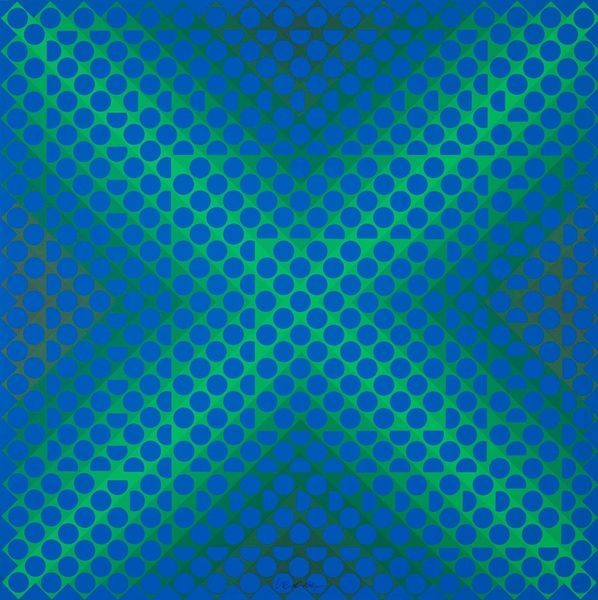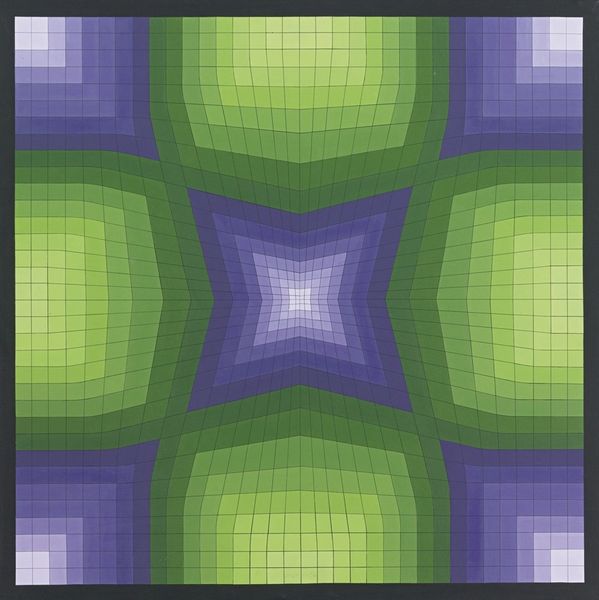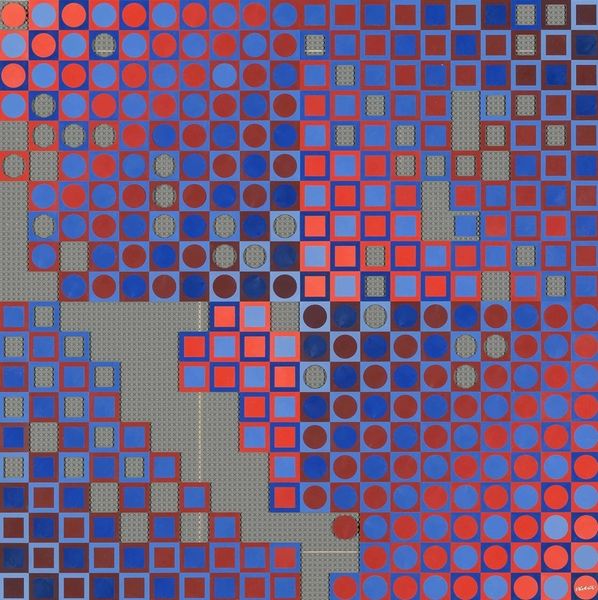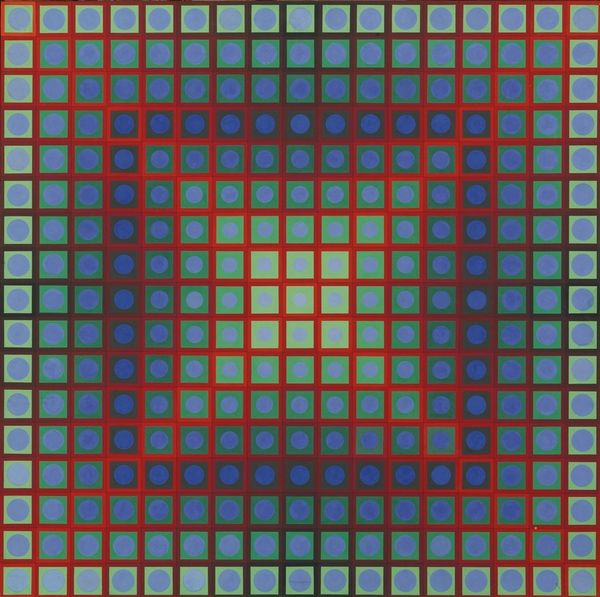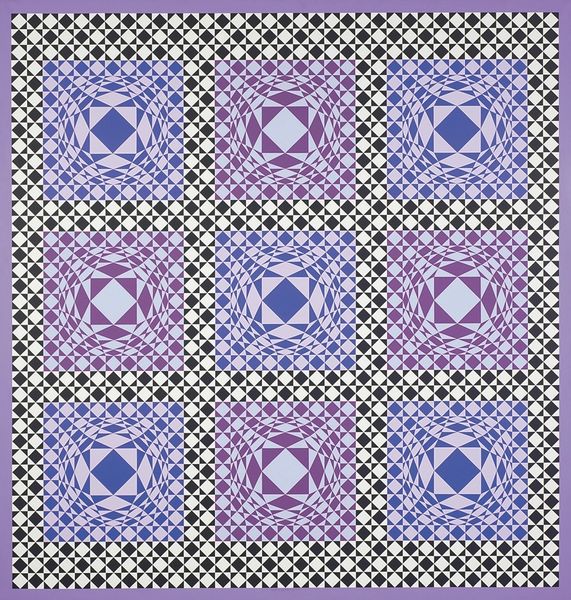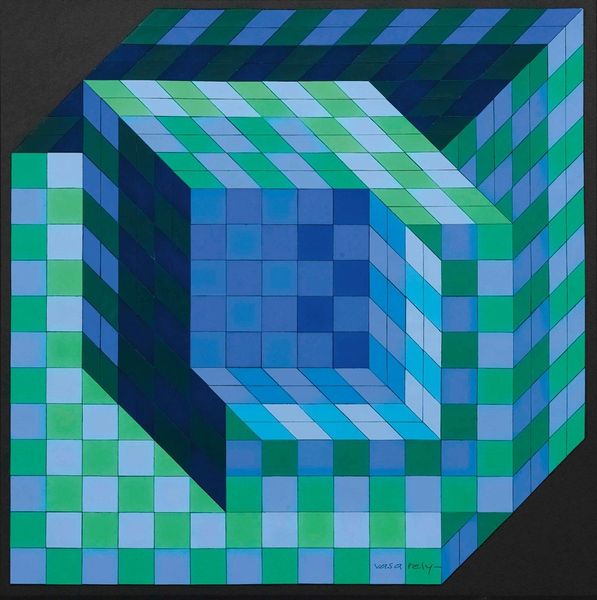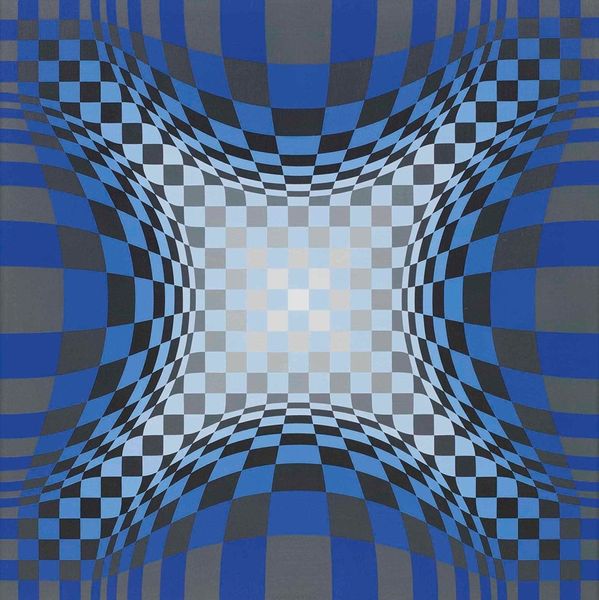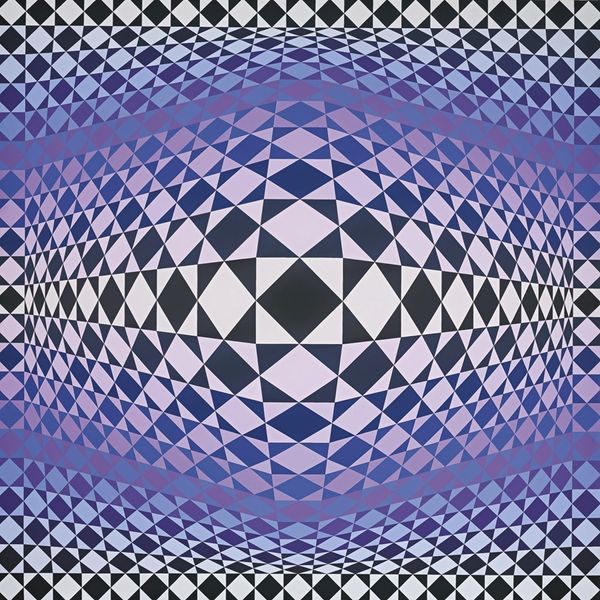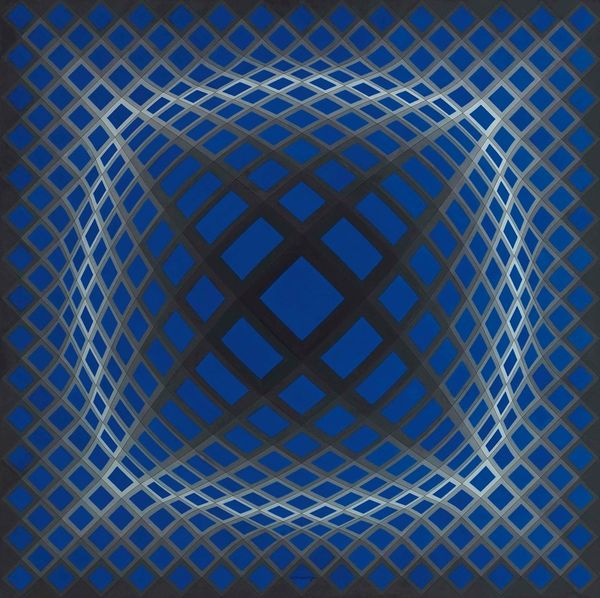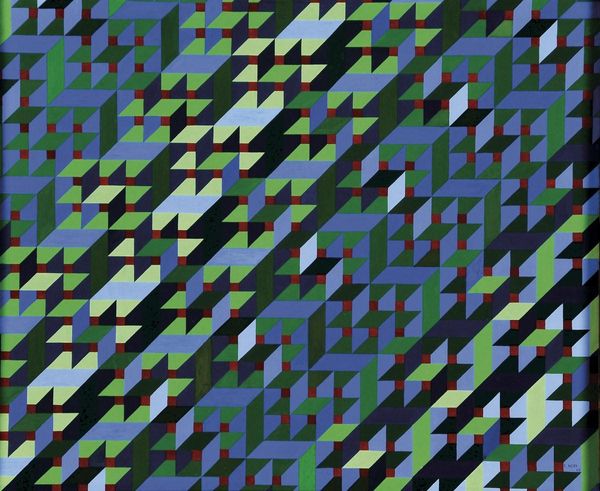
acrylic-paint
#
op-art
#
acrylic-paint
#
abstract
#
geometric pattern
#
geometric
#
abstraction
Copyright: Modern Artists: Artvee
Editor: Here we have Victor Vasarely’s "Neff" from 1980, done in acrylic. The colours, these cool blues, greens, and purples, are making me think of a retro futuristic video game. What do you see in this piece? Curator: "Neff," it pulses, doesn’t it? It’s more than just colour; these meticulously arranged squares invoke a sense of spatial distortion. Op Art like this often speaks to the post-war fascination with technology and perception. Think of it: we're emerging into an era of information overload, where our senses are constantly bombarded. Editor: So, the visual illusion relates to information overload? Curator: Precisely! The illusion tricks our eye, prompting the brain to work to resolve conflicting data. Vasarely masterfully harnesses the grid - an ancient symbol of order - and twists it into something destabilizing. Do you perceive a tension between control and chaos? Editor: Yes, definitely. The rigid grid structure is clear, but the color shifts make the surface appear like it’s bending. Curator: Exactly. And those colour choices aren't random. These blues and greens tap into archetypal notions of the sublime. The colours calm while the distortion disorients; an exploration of modern anxieties, wouldn't you say? Editor: I didn't think about it that way. I was stuck on a surface reading of colors! Thanks for opening up a new perspective. Curator: The pleasure is mine. Art is a mirror, reflecting back at us our hopes, fears and persistent drive to seek meaning from abstraction.
Comments
No comments
Be the first to comment and join the conversation on the ultimate creative platform.
